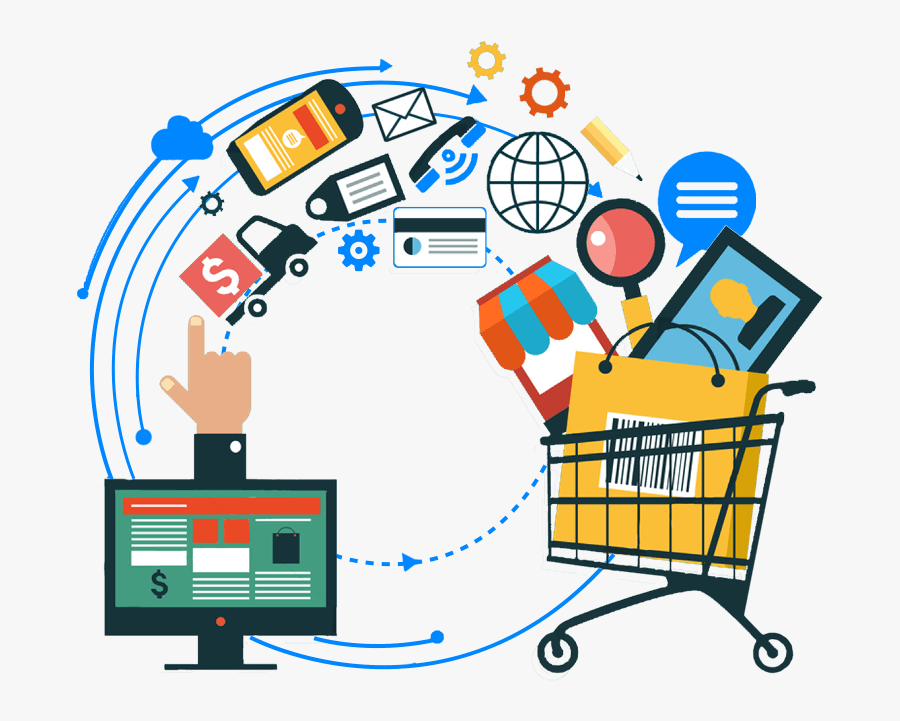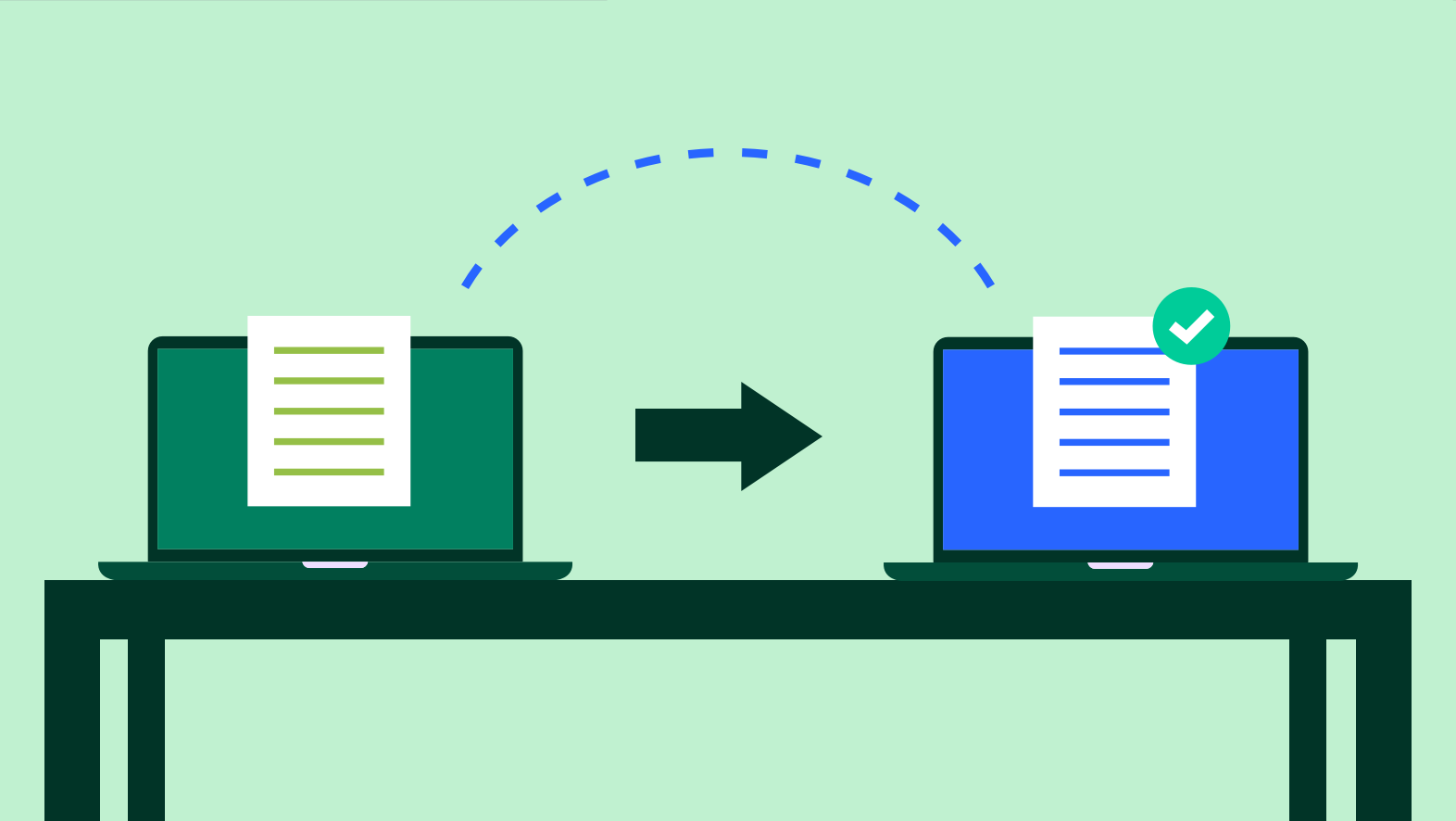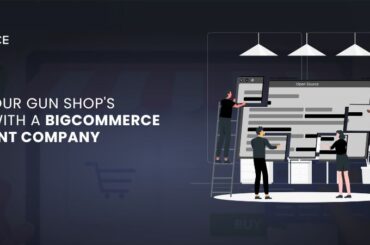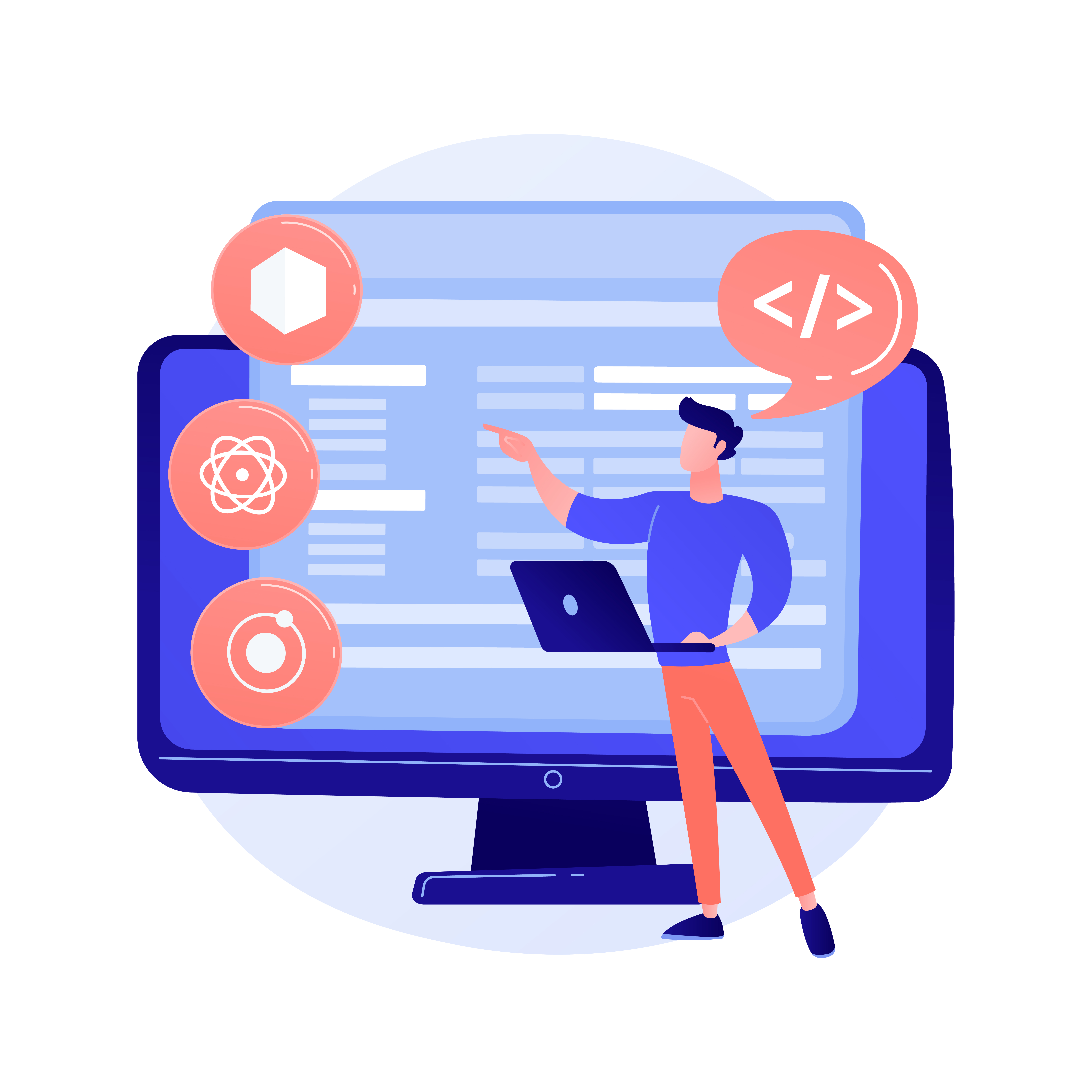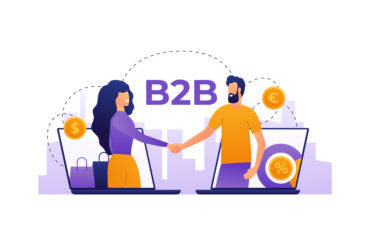Migrate From Shopify to BigCommerce(An Ultimate Guide)
Last Updated | April 26, 2024
Table of Contents
In the post-COVID era, online platforms saw their demands surge. This includes online shopping which also saw a huge increase. Shopify and BigCommerce are platforms for online merchants who sell their products over the internet.
Both of the platforms have their pros and cons. Shopify is an e-commerce platform launched in 2006. It is based in Canada and boasts over 1.8 million active stores which are situated in over 175 countries. Shopify is one of the most successful e-commerce stores present in the market today.
Bigcommerce on the other hand is another leading e-commerce platform. It is a well-established platform with quickly-growing business opportunities.
This platform is able to merge the functionality of the store as an enterprise, has an open app ecosystem and architecture, and has had market-leading performances in the past couple of years.
Bigcommerce allows online businesses to increase their online sales with almost 80% reduced cost, time, and complexity instead of using other alternates. Bigcommerce also strengthens the B2C and B2B e-commerce merchants.
Bigcommerce is ideal to assist the merchants to achieve increased sales at each stage of the business growth. Many merchants now choose to migrate shopify to bigcommerce to increase their business opportunities.
About BigCommerce
As the name suggests, Bigcommerce means bug business. Bigcommerce is a premium e-commerce solution that is self-hosted. It allows the store owners to set up their own online stores and then customize these stores as per their liking.
Once the store is up and ready, it can be operational to sell all sorts of products, ranging from digital or physical to service-based products over the internet. As long as a person has access to the internet, they can easily build and manage their Bigcommerce store from anywhere.
It does not require users to purchase their own web hosting services or install anything on the computers in order to use Bigcommerce. Rather, it works like software as a service. This means that the user of the software will only have to pay a fixed monthly fee in order to continue the use of the services, so it’s easy on the pocket.
Another advantage of Bigcommerce being a software as a service is that it provides a range of custom templates that could be used to design the online store. Irrespective of the products that need to be sold, Bigcommerce will make it very easy to display them in the store and also provide multiple powerful tools that will be used to help market the products to the online audience.
Bigcommerce has a decent learning curve that can be mastered by using several online features of the platform. But if you feel that you need a top class store without any prior coding experience, you can always hire a bigcommerce web design company to provide you with bigcommerce development services for your storefront.
The platform is easy to use for tech-savvy users and the developers have no problems customizing the CSS and HTML of their online stores.
If you want to roll your sleeves up and setup a WooCommerce Store from Scratch, there’s a step-by-step guide on how to setup WooCommerce store.
Some Core Features of BigCommerce
Even if the store owner wishes to spend some time learning the ins and outs of the platform, the user can start to learn right from the beginning by building their ideal online store on Bigcommerce from scratch.
They have all the help they need from the internet but it is always preferable to hire Bigcommerce Support Services from certified bigcommerce design services. The four different Bigcommerce pricing plans are the plus plans, the pro plus, enterprise packages, and the standard offerings as well.
Bigcommerce provides the best value for your money. No matter which plans you choose, you will enjoy these core features in all plans:
- The page builder tool is a user-friendly drag-and-drop page-design tool.
- 12 absolutely free templates to choose from and customize the store.
- A Suite of the Search Engine Optimization (SEO) features.
- Automatic optimization for images via the Akamai Image Manager.
- Integration of a wide range of payment gateways such as PayPal.
- Integration with marketing services, including named brands such as Mailchimp, iContact, Constant Contact, and Interspire.
- A Complete Content Management System to manage content functionality.
- Gift vouchers and discount coupons for the customers.
- Product Review Capabilities for the store owners.
- Professional Reporting for a comprehensive and detailed overview of store performance.
- A function to modify CSS and HTML as you wish and whenever you want.
- An unlimited number of user accounts for the store.
- The feature is to sell an unlimited amount of physical or digital products from any category in the store and also apply the shipping rates you want.
These features make it a must for online store owners to have an e-commerce platform. You can always opt for Bigcommerce Integration with your Shopify platform if you aren’t completely convinced to migrate shopify to bigcommerce.
Read Also How to Transfer Shopify Domain
About Shopify
Shopify is an online platform for e-commerce that was launched back in 2006 by a Canadian-based multinational company. The platform is an online selling platform that has all-inclusive features and is a brilliant option for businesses of all sizes.
For a fixed monthly rate for the software as a service company, one can develop and create their own store to sell, promote and ship their products. Shopify is one of the most popular e-commerce store builders in the world thanks to its low barrier to entry.
Shopify is a subscription-based e-commerce platform that allows the stores to sell physical, digital, and service-based products over the internet.
One can easily build their own Shopify store and sell through the website. Store owners can also sell their products through social media, email marketing, blog posts, and on the store with a Shopify buy button.
But in spite of this, fortune500 businesses become more and more dominant on Shopify. As a result, several businesses choose to migrate shopify to bigcommerce as it is more suitable for those businesses. Some even opt for Bigcommerce Integration with Shopify to maximize exposure and increase the total product sales.
Some Reasons Why you Want to Switch from Shopify to BigCommerce.
Pricing policies.
There could be several reasons why one would want to switch from Shopify to Bigcommerce. One of the easiest methods to compare the different e-commerce solutions would be to compare their pricing policies and then also compare the features that will be offered in each plan.
It is even better if the platforms provide a free trial to their customers. Shopify offers their customers a 2-week free trial whereas bigcommerce offers a 15-day free trial before users have to select a plan. Shopify and bigcommerce have a quite similar structures for pricing. However, the price alone doesn’t matter.
What must be kept on the scale is the value being provided in the plans. Shopify charges their customers transactions with each payment if Shopify payments are being used. They charge 2.9% + 30 cents with the Basic Shopify plan.
If a different payment provider is chosen the store owner will still be charged a 2% fee on each transaction by Shopify and also get charged a transaction fee that the payment provider charges on their end.
On the other hand, Bigcommerce charges no transaction fees for the store owners. However, you will be paying a fee that will be dependent on which payment provider is chosen. So if Shopify payments are chosen, the transaction fees from Bigcommercecan be expected to be the same.
However, if you make use of a different payment method on Shopify, you will be saving more money with Bigcommerce because it does not have an additional order fee like that of Shopify where they charge 2% when Shopify payments are not being used.
Shopify does provide abandoned cart recovery on their Basic plan which Bigcommerce does not provide until their plus plan.
But, Bigcommerce does offer gift cards and coupons in their standard plan which Shopify doesn’t provide until their Shopify plan is used. You must take into consideration which feature is more important for the business. But you can save more on pricing with Bigcommerce.
Themes for stores.
The display of the e-commerce store is perhaps one of the most influential factors that determine the success of your store. Even if the store has a good product but the display of the store is unappealing, people tend to abandon the store and redirect to your competitors’ store.
To counter this problem, Shopify and Bigcommerce both make sure that the stores have a high-quality theme on the website. Both platforms also have a similar price for the themes that they offer in a range of $140 – $235 and also offer a free but small selection of themes.
When it comes to themes, Shopify does have a slight edge as it offers more themes for a cheaper price. Shopify offers 613 themes whereas Bigcommerce only has about 65 themes.
The beginning price for Bigcommerce themes is an outright $69 but Shopify themes can start at about $16. The Shopify themes have a variety as compared to Bigcommerce.
But, Bigcommerce themes are equally if not more visually appealing, and at the end of the day, the better quality of Bigcommerce themes make it a good choice.
The ecosystem and the app store.
Applications are a critical part of the e-commerce store. These apps can enhance e-commerce functionalities and also help automate the daily activities and tasks of running an online business.
Shopify has a lot of demand and thus it has better developer relations when compared to Bigcommerce. Shopify has more apps, themes, and developers. This can help create a variety of support and other applications.
As the supply of Shopify developers increases, there is a lower cost for the developers which creates a much more efficient ecosystem. This gives Shopify a better ecosystem. However, Bigcommerce on the other hand provides much more features and apps when compared to Shopify. You can download these apps and get started.
These also allow Bigcommerce to allow for Headless BigCommerce Development as well. When choosing the platform, you can make a list of the core features that you require for the e-commerce store and when you find all of these customized features in the Bigcommerce application store, then you can be on the way.
If you want options to grow your business and compete with the fortune500 companies, Shopify may be better. Both platforms sell merchandise worth millions of dollars so both of the platforms are more than capable to handle your e-commerce store.
The usability of the platforms.
Some e-commerce store owners are new to the business or just don’t have the technical expertise, so they tend to hire development services for their stores.
If a platform has an easy-to-use interface, it will be critical for the store owner to choose such a platform so they can manage it themselves. It has an easy drag and drops site builder that can create a customized theme that will effortlessly allow the store owner to add and remove content from the store and different sections.
Bigcommerce has an easy-to-use theme customizer that makes it very easy to make websites. It is more code-oriented to add different sections such as content and banners with Bigcommerce.
Bigcommerce has sufficient documentation that makes it easy to understand where to edit the code but it does require some technical expertise. This doesn’t mean that Bigcommerce is hard to use, many people find that the functions are easy and suitable to meet their business needs.
Shopify is more oriented to those users that are new and have never built a website before and are starting and learning. This means that Shopify is less detail-oriented as compared to Bigcommerce.
The categorization of products and collections is another area in the platform functionalities that should be considered. Shopify has a collection of tools that can easily create new collections and also allows to manually select the products or create automated rules for the inclusion of the products.
This is a great feature when the store is getting an influx of new products that need to be placed in a specific category automatically. However, Shopify has no feature to create a category hierarchy or a nested collection.
The only method to nest categories in Shopify would be through the navigational menu. But the product itself will not show the subcategories or categories etc. For instance, if you have a category of clothes, but want a subcategory of pants, Shopify would read these both as an equal collection.
Even when you add the pants under the clothes category inside the navigation settings. For Shopify, t is not possible to organize the products under a specific category hierarchy. On the other hand, Bigcommerce allows users to organize their products within categories and subcategories on multiple levels.
This makes the organization of the products easy and allows the categories to be automatically displayed on the navigational menu on the store. However, the Bigcommerce lacks the automatic categorization feature for a product and will require the assistance of the store owner to set up.
It is preferred to have an adequate Bigcommerce Integration solution with inventory management software to overcome this problem.
Reliability of the platform.
The reliability of the platform can refer to the uptime, the availability, and the least downtime. The platform for e-commerce must be 24/7 available and reliable by providing the best services to users around the globe.
It is critical to be aware of the level of support that store owners will receive from the e-commerce platforms. Therefore it is a must for the store owners to be aware. Shopify and Bigcommerce are both reliable and provide phone calls, emails, and live chat support. Shopify also provides help to users over Twitter.
Both e-commerce platforms provide resources such as community forums, blogs, guides, and help centers that can assist the store owners in finding the solutions to their problems. Also, both platforms have a relatively large community where other developers, store owners, companies, and purchasers can interact with each other.
There are several companies that can make use of these two platforms as both of these platforms are highly reliable. It is important to be aware that both platforms are quite similar when it comes to their features and advantages. However, if a single platform is not yielding results, you can always migrate shopify to bigcommerce.
Why did some people make the switch from Shopify to Bigcommerce
Most of the people when inquired about why they left Shopify for Bigcommerce, replied by stating that Shopify Payments were one of the major factors. This default payment gateway is incredibly stringent about which products can be sold in the store.
Some of the products such as outdoor products are not allowed to be processed by Shopify Payments. For some people, it becomes difficult to conduct business as the products can’t be taken off the store.
Also, the additional charge when another payment gateway is used makes people lose out on their revenue to Shopify. So people generally turn to Bigcommerce to make their online stores with no problems with payments.
They quote that the transition is facilitated by Bigcommerce and they easily redesign their stores, themes, and templates and integrate all of their products from Shopify to Bigcommerce by performing Bigcommerce Integration.
Some people who lack technical expertise can always contact a bigcommerce website development company to set up their storefronts and provide bigcommerce development services for their newly migrated stores.
Read this Headless BigCommerce Blog to take the first step toward becoming headless today.
Pros And Cons Of Migrating From Shopify To Bigcommerce?
Shopify is a brilliant platform to start a new online store on as it is very simple and easy to set up. It also provides high customization which can make the storefront tailored to the needs of the store owner’s business. Shopify is suitable for small businesses but the environment is highly competitive.
It is very affordable for business and easy to use for novice users. Shopify is less suitable for big companies. Perhaps the biggest disadvantage of Shopify is that as compared to Bigcommerce, it is incredibly expensive due to additional surcharges.
The platform is very easy to use and provides editing tools. Bigcommerce is more coding-oriented which means that it provides greater built-in customization for storefronts. Bigcommerce also provides applications that make operations easy and efficient. Bigcommerce has its downsides as well when compared to Shopify.
As compared to Shopify, Bigcommerce has less appealing templates as for the same price on Shopify you can get better templates. Code for certain templates requires the use of global variables which have glitches and fail to work at times. Shopify has a better drag and drop builder for stores.
The migration will also cost a few hundred dollars so that could be a disadvantage but it is a one-time investment that has a high return on investment. So it is best to hire Bigcommerce Support Services from certified companies to get a safe, secure, and affordable migration.
Migrating your store from BigCommerce to Shopify!
To migrate shopify to bigcommerce, we can classify them into 4 basic steps if you are making use of a third-party migrating tool such as Cart2Cart.
- Choose the Shopify store as your source cart. Provide all of the Shopify store details such as the store URL, the API details, and the names.
- Enter your new Bigcommerce URL, and API credentials that are needed to set up a connection with the new Bigcommerce store.
- Select all of the data that needs to be migrated from Shopify to Bigcommerce. You should pick the data types that will be transferred, and then match them correspondingly to the Bigcommerce records and pick any other extra migration options.
- Launch the Bigcommerce migration and see how the third-party integrators will work to migrate the data.
If you prefer direct migration from Bigcommerce to Shopify, that is possible as well. That can be decomposed into 3 main steps.
Step 1: Export data from Bigcommerce.
The first step in this migration would be to export the data such as the orders, customers, and products from Bigcommerce to Shopify.
Once the export is complete, the computer will automatically download a CSV file that will contain all of the Bigcommerce data that can then be utilized to import the data into Shopify. Then export additional product data from Bigcommerce.
You need to export ant additional products, variants, and information to complete the product data. You can follow the steps below to export the Bigcommerce store data:
- Login to your Bigcommerce store. From your BigCommerce dashboard,you must locate and then navigate to the Products > Export.
- Under the option that says, Export Template and File Format Options, select the Default button and then click on Continue to proceed.
- A dialog box will appear when the Products option will be clicked, then click on Export my Products to a CSV file, and then click on the Close button. A new CSV file will be downloaded to your computer. It will contain all of the store’s product data.
- Under the Export Template and File Format Options, select the option of Bulk Edit and then click on Continue to advance.
- Click on the Export my Products to a CSV file option and then click on Close. A second CSV file will be downloaded which will contain any additional product details and the data of the product variants.
Step 2: Export the store’s order data from BigCommerce.
- Once logged in to the Bigcommerce store. You will use yourBigCommerce dashboard and then navigate to Orders > Export.
- Under the Export Template and File Format Options, select the Default button and then click on Continue.
- On the Orders option, once clicked a dialog box will appear. After this, you will select the Export my Orders to a CSV file and then click on the Close button. A new CSV file will be downloaded which will contain order details.
Step 3: Export the customer data from the BigCommerce store.
- Login to your Bigcommerce account.
- Then from the BigCommerce dashboard, navigate from Customers > Export.
- Under the option that says “Export Template and File Format Options”, and select the Default option and then click Continue.
- In the Customers Export dialog box that appears, click Export my customers to a CSV file and then click Close. A CSV file that contains all of the customer data will be saved to your computer.
Step 4: Import the store data into your Shopify store.
Once you have saved the product, customers, and order data from Bigcommerce into a CSV file stored on your computer, you can now import these files directly into Shopify.
- Log in to the Shopify account and from your Shopify admin panel, click on Apps > Store Importer.
- On the option of Import your data into Shopify page, select the option that says BigCommerce from the drop-down menu.
- Under the button of Upload files, click on Add file and select all of the downloaded files. You can select any quantity of CSV files to upload to Shopify. When products are imported, you will also need to add these exported files for Bulk Edit templates and also for the Default option to ensure that the data is imported accurately.
- Lastly, you must now click on these options Continue import > Import.
Step 5: Review all of the data and then update your imported data.
If the import of the data was successful, then the order data, product data, and customer data will all be available in the Shopify admin panel. If some instances of the customers or products are imported unsuccessfully, then you can add them manually yourself.
If you encounter any errors with the CSV import, you can always look online for common solutions for CSV import problems.
If the import is finished, the summary page for the import will show all of the details of the import that will say import successful.
The store owner must, at least once, review the messages that popup in the review section for the import summary to catch any errors. You can even edit the imported data by manually clicking on the View items button next to the messages.
You have successfully migrated from Bigcommerce to Shopify and can now easily launch your store on Shopify.
If you find this migration problem difficult or come across errors and if you are of a non-technical background, we would recommend hiring Bigcommerce Support Services to help with store migration.
Read This Article: Essential WooCommerce Features Your Store Must Have to Succeed
How to migrate from Shopify to BigCommerce using our Secure Migration Services?
Migration of the store from Shopify to Bigcommerce is a risky task. The migration if performed incorrectly may result in data loss, data corruption, or data leaks.
All of these are detrimental to online businesses. Our company’s secure migration services are always preferred by our clients of all ranges. Whether we perform store migrations for startups or Fortune500 companies, we do so with the utmost care.
The migration practices, company policies, and the standards of our company allow for a great process that ensures the best results after the process is complete. There are several reasons why you should choose Folio3 and our secure migration services for your migrations:
- We have certified Shopify developers who have plenty of hands-on experience with data migrations to and from Shopify.
- We have adequate resources that make us independent and this is quite useful for security. Since we have our own hardware, we don’t rely upon any third party, and this way the data of the clients are kept safe and secure.
- Folio3 provides the best possible rates to our clients and the packages provided by the company are quite valuable, affordable, and have a high return on investment.
- Folio3 has skilled database engineers that can clean your data to make the migration process more efficient.
These are some of the reasons why you should choose Folio3 as your Bigcommerce Integration or migration service provider by using our secure migration services.
Conclusion.
The migration from Shopify to Bigcommerce has its own benefits. Both platforms are a brilliant choice for e-commerce businesses but Bigcommerce has certain benefits over Shopify where the major benefits are being more affordable and providing better value.
Bigcommerce also allows for Headless BigCommerce Development that provides different storefronts for different users and devices. It is best to hire bigcommerce development services for any activities relating to your e-commerce business.
FAQs.
Q) How to dropship on Bigcommerce?
When it comes to dropshipping in Bigcommerce, there are no hard and fast rules. You can set up a store as per your needs. However, you can follow a guideline to get a clear idea of what steps to follow.
- Make a selling plan. Your basic selling plan for the Bigcommerce store will consist of three things: your brand, the chosen niche, and the merchandise in the store. It is best to invest some time in researching and planning the use of these aspects to launch your dropshipping store. After the products, you can shift your focus to the traffic and the customers to build a community with them for the store. The product that you choose to sell will affect your branding as well. The store which has a catchy identity and visual style attracts customers and builds consumer confidence. So have a catchy tagline, a logo, and other marketing material. Make use of a bigcommerce web design company to design an appealing storefront.
- Choose a plan and sign up with Bigcommerce. You can choose either of the three business plans Bigcommerce offer to businesses as per their needs. All plans have a great advantage as they charge 0% transaction fees and provide unlimited user accounts, file storage, and unlimited products which is brilliant for dropshipping. You can start a 15-day trial and set up your store and even make some transactions as this time is more than enough to get the store up and running.
- Create your store. You can use the readymade dropshipping templates and begin the store. Bigcommerce will allow you to customize your template by using your own custom code to make your store stand out. You can hire Bigcommerce support services for help in coding if you deem necessary, and then make the storefront.
- Choose a product source. Now as the store is ready, you have to choose the product applications that will source your store. You can use product sourcing apps provided by Bigcommerce but you can even add them manually. It is best to do research on what you can sell. Ideally, you must choose an app that can help you search for online wholesale marketplace listings, have import buttons that import with a single click, and can also send customer orders directly to the suppliers.
- Begin selling. Now every step has been performed and you can now launch the store and start selling by logging in to the store. Under the option of “Review and Test store” on the bottom of the page, there will be a button that says “Launch store”. Click on it to make the store go live. Remember to offer some discounts and coupons to promote your new store.
Q) What are the Bigcommerce pricing plans?
- A) Bigcommerce has 3 different pricing plans available for e-commerce store owners.
- Their standard plan is priced at $29.95 per month and has the same annual pricing package.
- Their most popular Plus plan is charged at $79.95 per month, and if accessed with the annual pricing plan, it costs $71.95 per month.
- Their Pro plan costs $299.95 per month, and if purchased with the annual plan it costs $269.96 per month.
These plans are suitable for different types of businesses so it is best to take consultation with a bigcommerce web design company that can guide you the best.
Migrate Your Store Data To A New Platform

